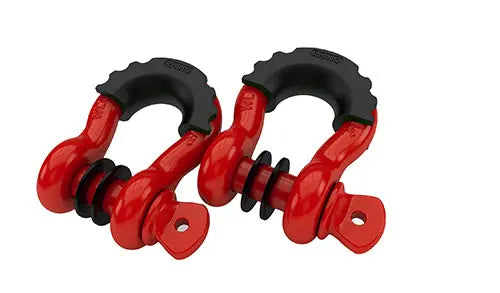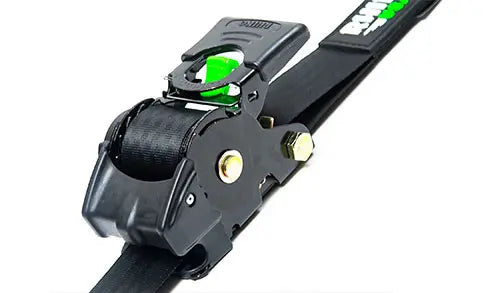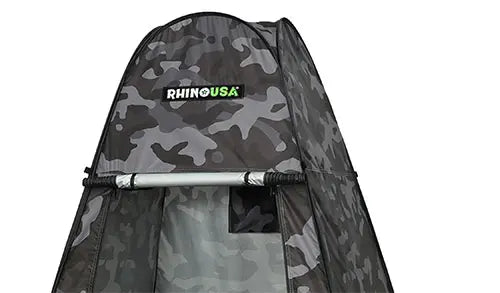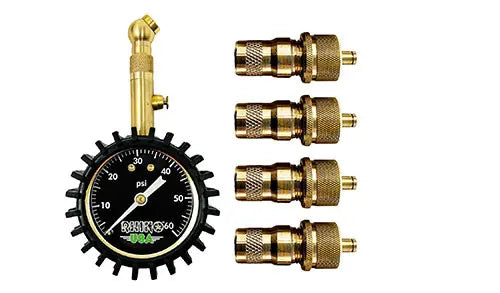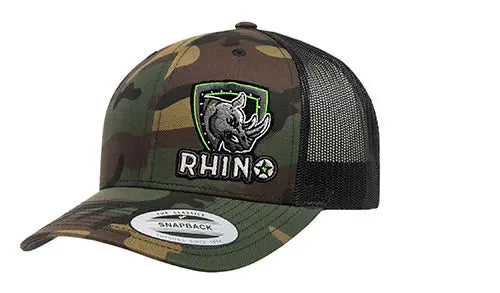Embarking on an overlanding adventure means traveling through remote areas where immediate medical help might not be available. Having a well-stocked first aid kit is crucial for addressing emergencies that could arise miles away from conventional medical facilities. Building your own first aid kit allows you to customize it based on your specific needs and the unique challenges of your journey.
When you create your own overlanding first aid kit, you ensure that you have the necessary supplies tailored to your personal and trip-specific requirements. Pre-made kits often lack specialized items that could be critical in remote settings. By assembling your kit, you can prioritize essential components like trauma care, basic medical supplies, and child-specific items if you travel with kids.
Customization also enables you to include high-quality products and tools recommended by first aid experts. A carefully curated first aid kit boosts your confidence, knowing you're prepared to handle injuries ranging from minor cuts to more severe incidents effectively. Dive into the specifics and start building a kit that best suits you and your overlanding adventures.
Considerations Before You Build
When building your overlanding first aid kit, several factors should guide your choices. Trip duration and location are crucial. Consider the climate and terrain of your destination. For example, a desert trip requires different supplies than a forest expedition.
Evaluate the number of people traveling. More individuals mean a need for additional equipment and supplies. If children or elderly are part of the group, their specific needs should also be accounted for.
Take into account any pre-existing medical conditions within your group. Ensure your kit has medications and resources to manage these conditions effectively. This could include items like epinephrine auto-injectors for allergies or insulin for diabetes.
Your first-aid training level matters significantly. If you haven't yet, consider taking a wilderness first-aid course. These courses enhance your ability to handle emergencies in remote areas where professional medical help might not be immediately available.
Building a robust first aid kit tailored to your specific journey can significantly enhance your safety and peace of mind.
The Foundation: Essential Supplies
When building your first overlanding first aid kit, it's crucial to start with the foundational supplies. These are the core items you should have to address common injuries and medical needs during your adventures.
Make sure you have a variety of bandages. Include adhesive bandages in different sizes for minor cuts and scrapes, and sterilized gauze pads for larger wounds. Butterfly bandages or wound closure strips are essential for closing deeper cuts when stitches aren't available.
Carry antiseptic wipes and solutions to clean wounds and prevent infections. Alcohol wipes, hydrogen peroxide, and antiseptic ointments are practical choices.
Don't forget pain relievers like ibuprofen or acetaminophen. Over-the-counter options help manage headaches, muscle pain, and minor injuries.
Pack antihistamines to handle allergic reactions. Options like diphenhydramine (Benadryl) can be life-saving in case of unexpected allergies.
Here's a quick reference table:
| Item |
Purpose |
| Adhesive Bandages (various sizes) |
Cover minor cuts and scrapes |
| Sterilized Gauze Pads |
Bandage larger wounds |
| Butterfly Bandages |
Close deeper cuts |
| Alcohol Wipes |
Disinfect wounds |
| Hydrogen Peroxide |
Clean cuts and scrapes |
| Antiseptic Ointment |
Prevent infection |
| Ibuprofen/Acetaminophen |
Relieve pain and reduce inflammation |
| Antihistamines (e.g., Benadryl) |
Treat allergic reactions |
These supplies lay the groundwork for a reliable first aid kit, keeping you prepared for a variety of medical situations while overlanding. Ensure each item is checked regularly for expiration dates and replaced as needed.
Addressing Common Overlanding Injuries
When heading out on an overlanding adventure, you're likely to encounter various minor injuries. Being prepared with the right supplies can make a big difference.
Blisters
Blisters can quickly turn a fun trip into a painful experience. Ensure your kit includes moleskin and blister pads. These provide cushioning and prevent further friction, offering quick relief.
Sprains and Strains
Overlanding often involves uneven terrain, making sprains and strains common. Include elastic wraps and braces in your kit. These items help stabilize the affected area and reduce swelling, supporting faster recovery.
Minor Cuts and Scrapes
Minor cuts and scrapes are almost inevitable. Pack antiseptics and antibiotic ointment. Cleaning wounds with antiseptics prevents infection, and applying antibiotic ointment aids healing.
Insect Bites and Stings
Insects can be a nuisance when you're out in the wild. Calamine lotion helps soothe the itching, while tweezers are essential for removing stingers or ticks. Having these items on hand ensures you can deal with bites effectively.
By packing these specific supplies, you’ll be better prepared to handle common overlanding injuries.
Environmental Concerns
When building your overlanding first aid kit, it's crucial to consider environmental concerns. Different terrains and climates present unique challenges that can affect your health and safety.
Start with sunscreen to protect your skin from harmful UV rays. Exposure to the sun can lead to sunburn or more severe issues like heat stroke. Regularly apply sunscreen during your adventures.
Insect repellent is essential to prevent bites from mosquitoes, ticks, and other insects. These bites can cause discomfort and diseases. Having a reliable repellent can help you stay bite-free.
For dealing with eye irritants, pack an eye wash solution. Dust and debris are common in many overland environments and can cause painful eye problems.
An emergency blanket is useful for preventing hypothermia in cold conditions. These blankets are compact and effective in retaining body heat, crucial for unexpected drops in temperature.
Water purification tablets are valuable for ensuring you have access to safe drinking water. Contaminated water can lead to illnesses like diarrhea, which can severely impact your trip.
Having these supplies on hand addresses many of the environmental concerns you might face on an overland trip. Equip yourself to handle sun exposure, insect bites, eye irritants, cold weather, and unsafe drinking water effectively.
Beyond Basic Treatment
When preparing your first aid kit for overlanding, there are certain items that go beyond basic treatment. These supplies are essential to manage more serious injuries until professional medical help is available.
Emergency Splints
Carrying emergency splints can be crucial for stabilizing fractures. They help prevent further injury and manage pain effectively.
- Types: Rigid splints, inflatable splints, and SAM splints.
Tourniquet
A tourniquet can be life-saving when controlling severe bleeding. It is vital to have proper training to use it correctly, as improper application can cause harm.
- Use: Only as a last resort if bleeding cannot be controlled by other means.
CPR Mask
Including a CPR mask helps protect you while providing rescue breaths during CPR. It ensures a safe barrier between you and the injured person.
- Benefit: Reduces the risk of cross-infection during resuscitation procedures.
Disclaimer: Always seek professional medical attention when necessary and ensure you are trained to use these advanced supplies.
Organization and Storage
Keeping your first aid kit organized and accessible is crucial in emergencies. A well-organized kit ensures that you can quickly find what you need when time is of the essence.
Use a durable, waterproof container to protect the contents from the elements. Overlanding can expose your kit to adverse conditions, so water and dust resistance are essential features.
Label all contents for easy identification. Clear labeling helps you and others find items quickly, especially in stressful situations. You can use stickers or a label maker for this purpose.
Consider using compartments or dividers to separate different types of supplies. For example, keep bandages in one section, medications in another, and trauma supplies in a third. This arrangement reduces the time spent searching for specific items.
Example Organization:
| Section |
Contents |
| Minor Injuries |
Band-Aids, antiseptic wipes, gauze pads |
| Medications |
Pain relievers, antihistamines, personal prescriptions |
| Trauma |
Tourniquet, trauma shears, emergency blanket |
Make sure the container is easily accessible. Store it in a spot that can be quickly reached in an emergency, such as the glove compartment or an external pouch on your backpack. By keeping your first aid kit well-organized and within reach, you'll be better prepared to handle medical emergencies during your overlanding adventures.
Keeping Your Kit Up-to-Date
Regularly checking and updating your overlanding first aid kit ensures you are always prepared. Start by replacing expired medications. Check the expiration dates on all medications and ointments at least once a year.
Replenish any supplies that have been used. Make a list of what you’ve used after each trip and restock those items promptly.
Consider adding new items based on your recent experiences. If you've encountered new injuries or situations, update your kit to accommodate those needs.
Checklist for Updating Your Kit:
- Check expiration dates
- Restock used items
- Add new supplies as needed
Below is a table of common items and suggested checks:
| Item Type |
Action Needed |
Frequency |
| Medications |
Replace if expired |
Annually |
| Bandages and Gauze |
Replenish if used |
After each trip |
| Antiseptics |
Check and replace if low |
Annually |
| Scissors and Tweezers |
Ensure they are functional |
Annually |
| Trauma Supplies |
Check for completeness |
Biannually |
Keep your kit in an easily accessible location and ensure all items are properly stored. By staying proactive, you guarantee your readiness for any emergency while on your overland adventures.

